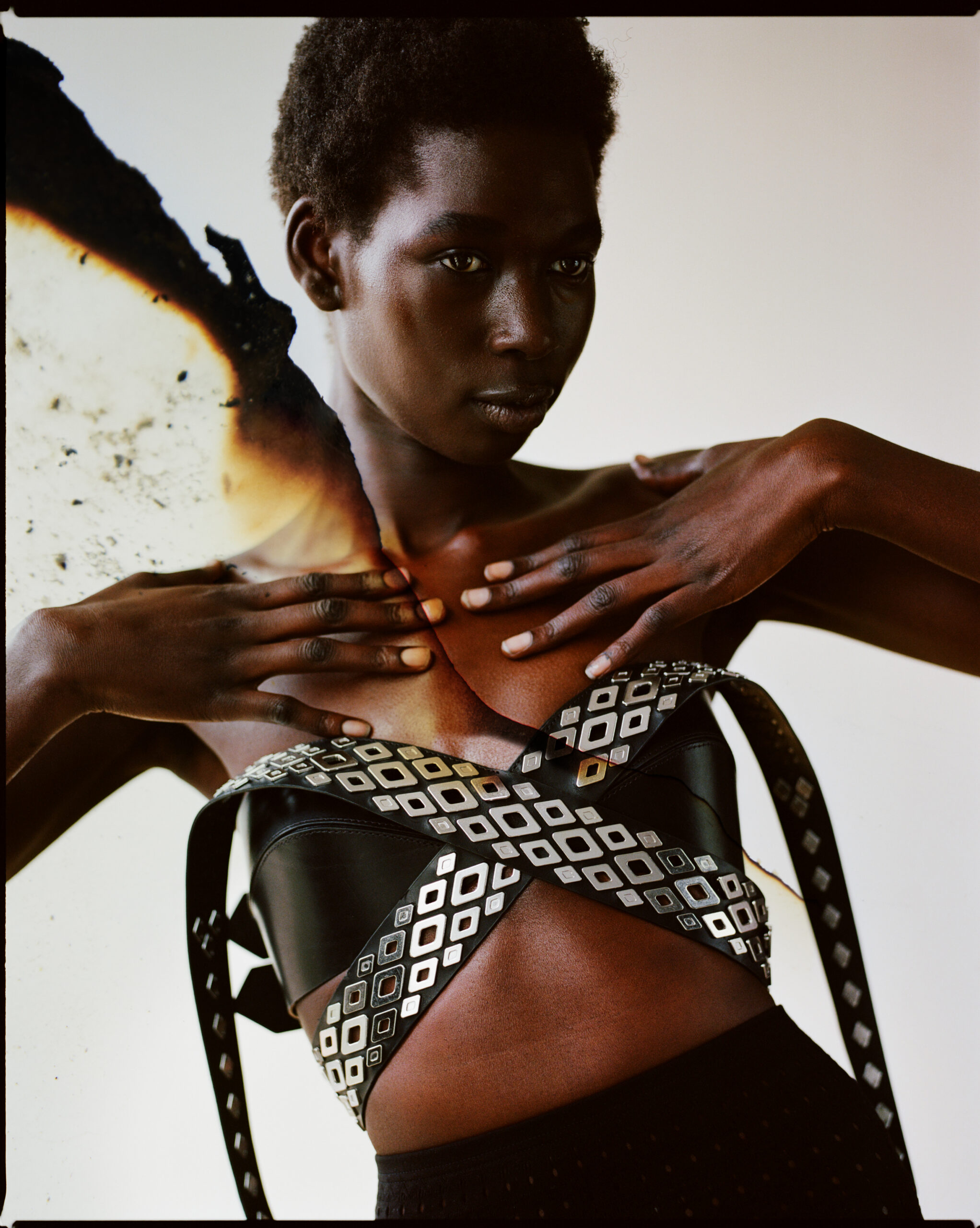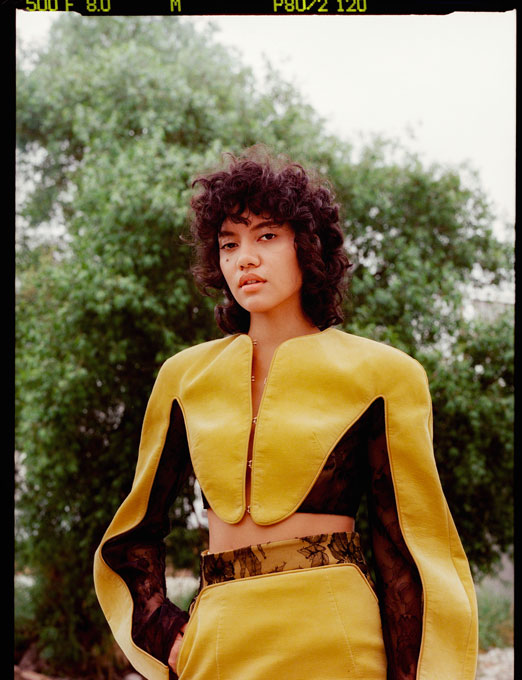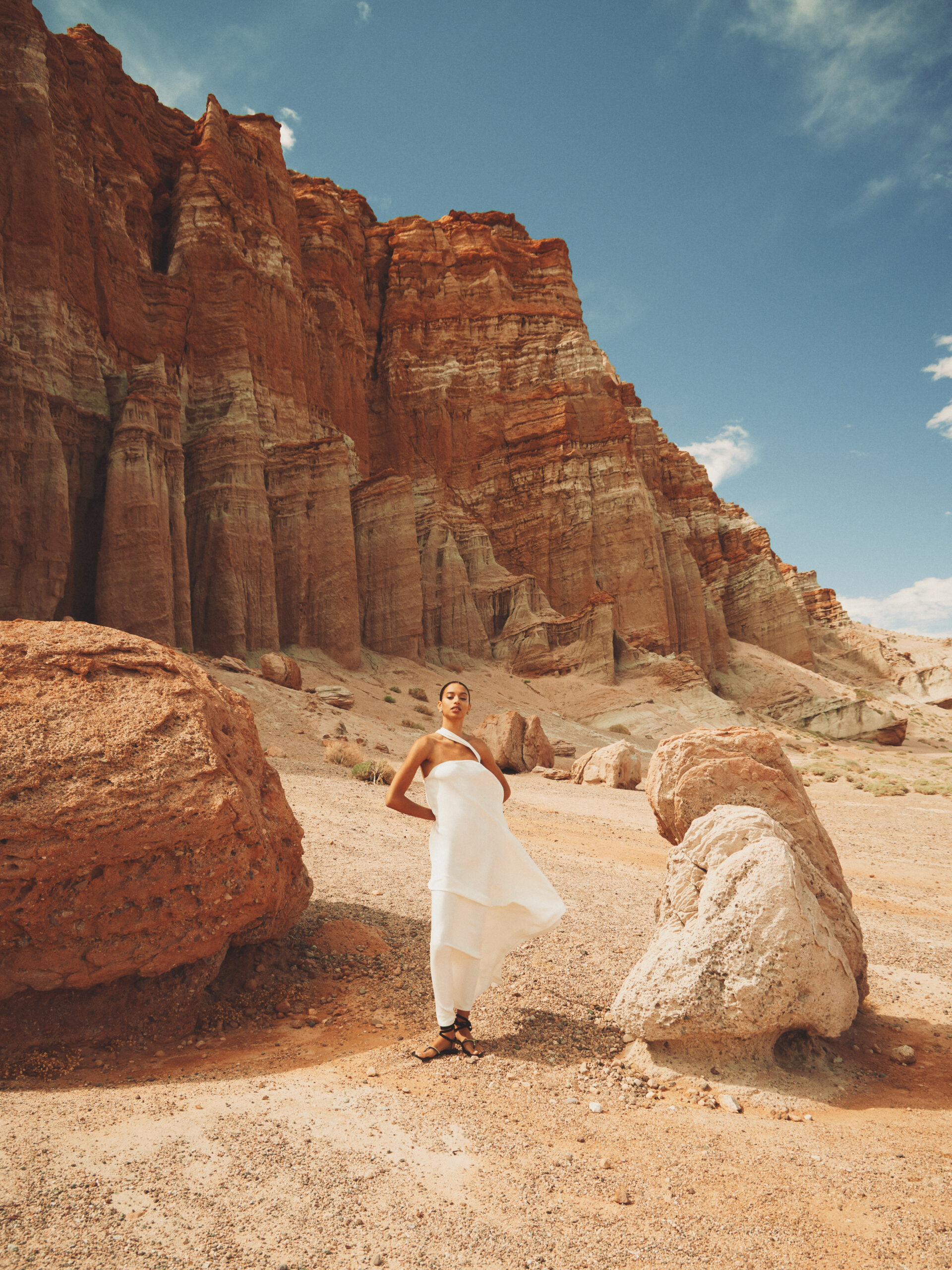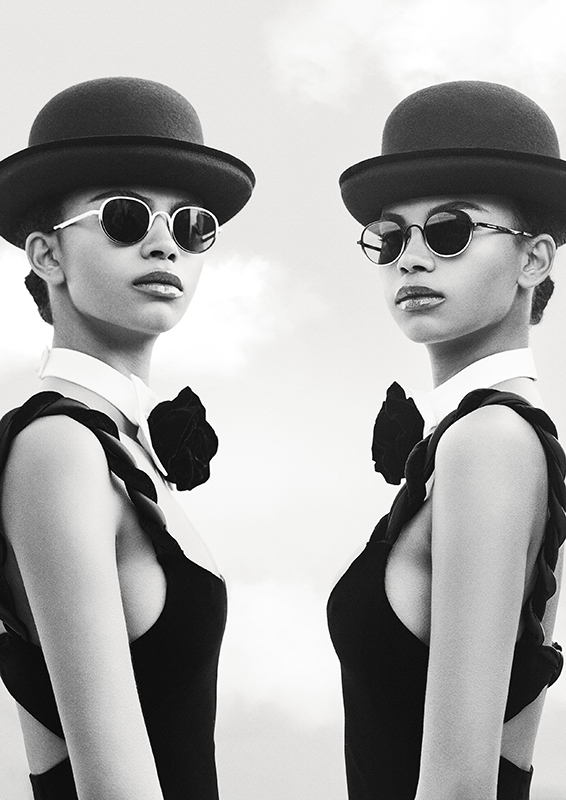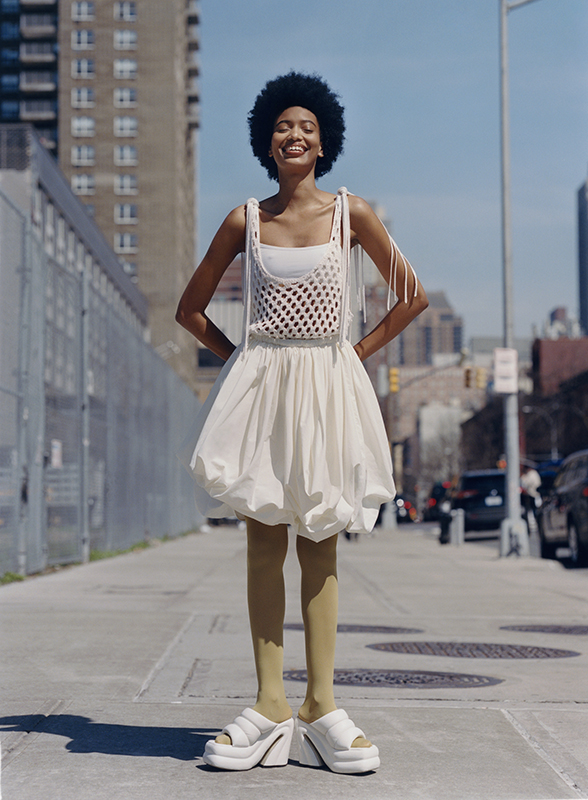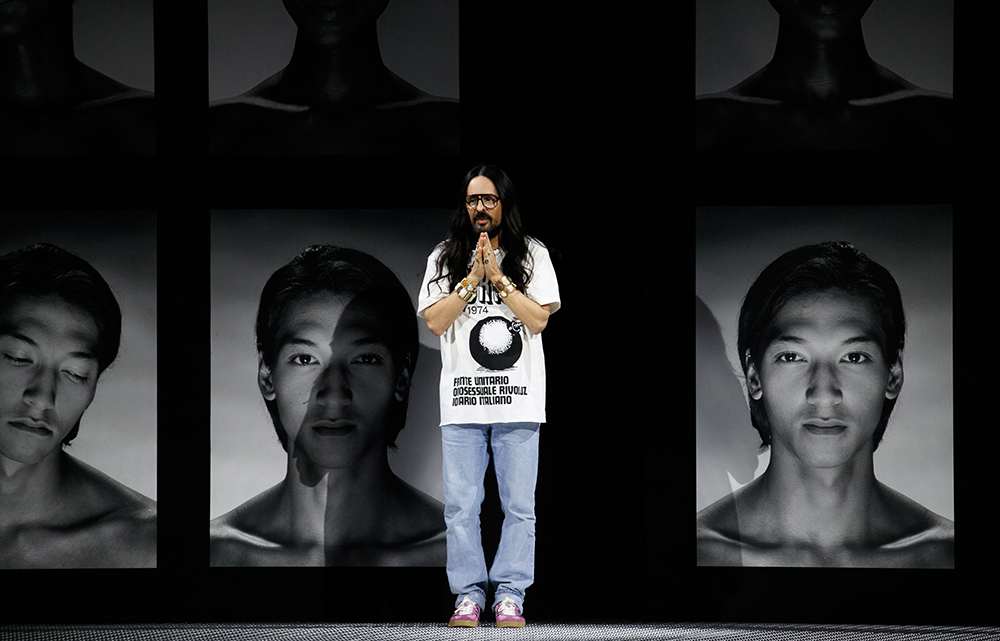Culture
LAURA HARRIER
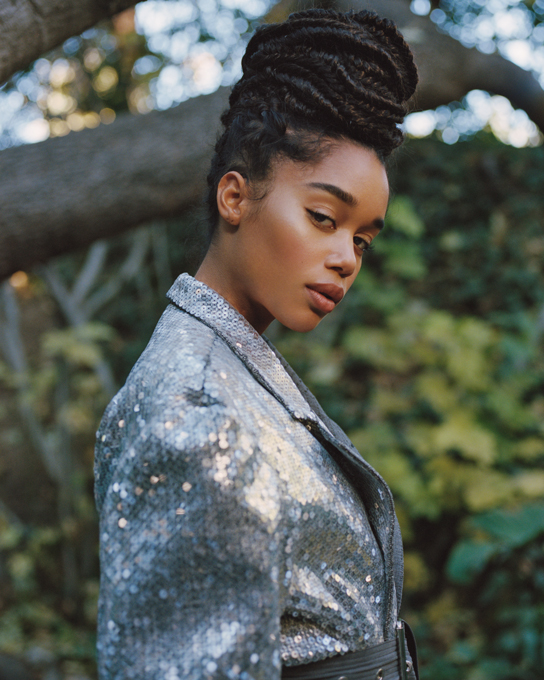
words by Shaday Stewart
images by Daria Kobayashi Ritch
Laura Harrier didn’t have big dreams of Hollywood fame as a child, but that hasn’t stopped the 30-year old actress from making a swift leap to big-screen success. “I didn’t know anyone who was an actor...so it just never really seemed possible,” says the former model. “It just never crossed my mind that this could actually be a path for my life until I moved to New York to go to college and got exposed to the world of acting and film and fashion.”
In just a few short years, Harrier has added an acclaimed Spike Lee film and a Marvel blockbuster to her envy-worthy resume. The Chicago-born actress, who is a combination of African American, Polish, and English descent, netted some impressive wins in 2020 alone. Harrier captured the dazzling grace of a post World War II-era starlet as Camille Washington in the Emmy-nominated Netflix series “Hollywood”. The show offers a revisionist look at the soaring career of a black actress who struggles to conquer Hollywood in racially segregated America — a topic that continues to feel relevant today.
Harrier also rocked out in Atelier Versace in the music video for Kygo and Tina Turner’s remix of “What’s Love Got to Do With It?” And of course, her big brown eyes, radiant smile, and elegant presence have landed Harrier in campaigns for Louis Vuitton and Calvin Klein and on the covers of Vogue and Glamour throughout her evolving career.
Lately, Harrier’s interviews are more likely to happen from the comfort of her home, not a crowded film set or daytime talk show. Social distancing has given the actress a chance to step out of the spotlight while also inviting the public to see a glimpse of her home life. She celebrated her 30th birthday in March with a Zoom party and partnered with leading brands throughout 2020 to create social media content, showcasing everything from her lockdown routine to her nighttime skincare regimen.
At the same time, she doesn’t hesitate to admit how much she misses the normalcy of socializing. “I want to go hug my grandma and I want to spend time with my family,” says Harrier. “I miss my friends. I just want to see the people that I love and hopefully get back to work and get back to the things I think make all of us happy, like human connection, and for me, being creative and being able to be on set and make something.”
Along with everyone else, Harrier is figuring out how to exist differently in the same spaces and stay healthy and balanced. “This is the longest I was in one place since I was a teenager,” she says. “That was really difficult at first in a way that I didn’t even sense until I was literally stuck in one place. The constant movement, the constant travel...is definitely a way to not have to really sit down and reflect and look at life and issues. So being forced to do that, I think, was actually a blessing in disguise.”
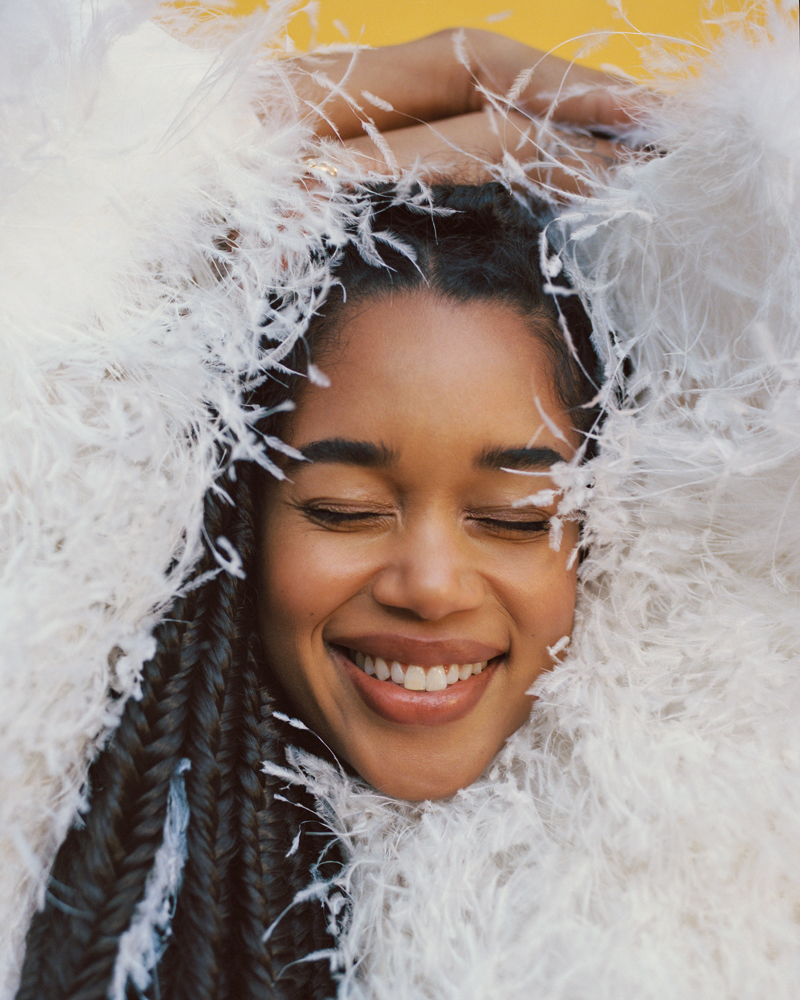
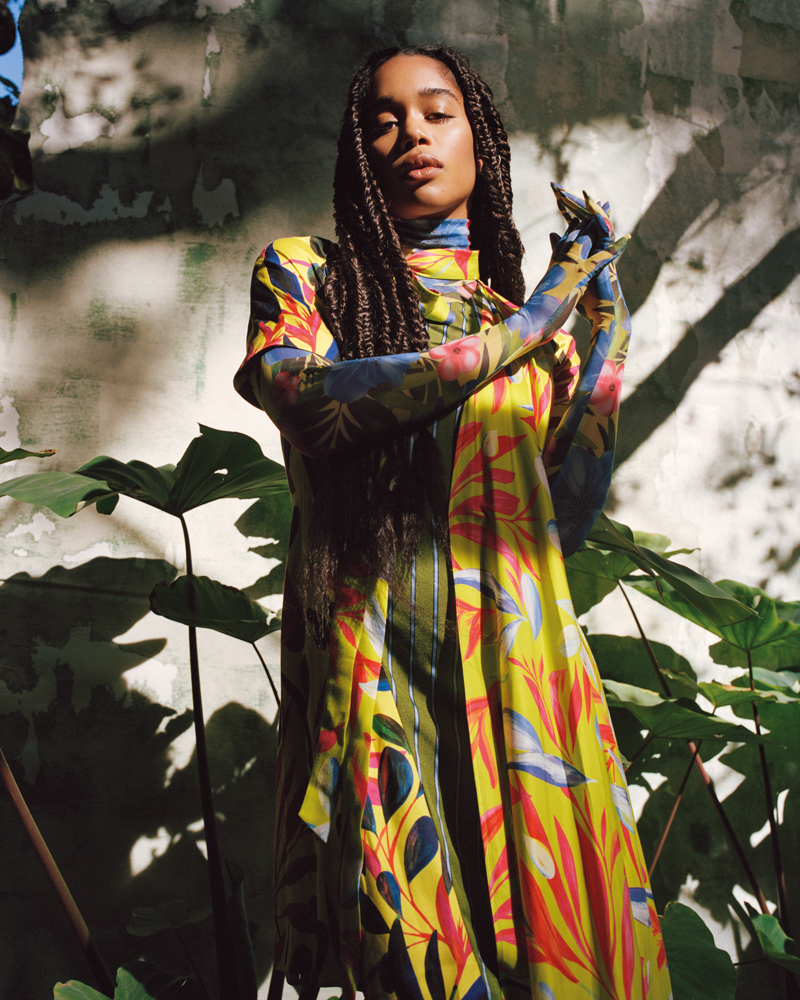
Harrier has enjoyed a virtually constant rise to stardom since she was scouted as a fashion model at age 17. She grew up in Evanston, Illinois (the famed location of John Hughes’ iconic films), with her younger brother, William, and her parents, Temujin and Linda. Despite living in a town steeped in movie Americana, she wasn’t wooed by the glamour of Hollywood and describes her childhood as a “pretty typical middle-class Midwestern upbringing.” As a teen model, Harrier saved money to pay for college and attended Gallatin at New York University before leaving to pursue acting at the William Esper Studio.
Harrier nabbed the role of Destiny Evans on “One Life to Live” while still in school, and she started to gain attention from industry players after working on two high-profile TV pilots, AMC’s “Galyntine” and Steve McQueen’s “Codes of Conduct.” Harrier soon landed her two most significant roles to date. She played as Peter Parker’s smart and timidly charming love interest in “Spiderman: Homecoming” and then transformed into Patrice Dumas, the confident, empowered leader of the Black Student Union in Spike Lee’s “BlacKkKlansman.”
Working with artists like Spike Lee and seeing the strength of his creative integrity up close is one of the reasons why Harrier made a permanent switch to the film industry. “He was the first introduction for me into what an auteur means. Like when I saw, “Do the Right Thing,” I think I was in high school and I remember thinking, ‘I want to see more of this person’s view of the world.’”
Like the rest of us, she is happy to say goodbye to 2020, but Harrier hopes the cultural reckoning of last year won’t simply fade. “It’s easy to just look at it as a moment in time and not see the change that continually needs to be made...and the leadership that needs to be put in place in order for Black people to have equal ground in this country and to be safe. I just really hope that we keep having these conversations...I just don’t want it to be a social media trend.”
Following her mentors’ footsteps, Harrier has always been outspoken about the need for greater representation in entertainment. The black audience is incredibly diverse and nuanced, so black actors’ characters should reflect that limitless range of perspectives and ideas. Harrier’s impressive slate of varied roles is inspiring for those of us watching her career — a rejection of the long-held notion that black entertainers are only suited for certain types of characters and environments. And in this period of social flux when so many different voices are fighting to be heard, Laura Harrier is determined to keep showing up on your screen and creating stories we want to be part of.

